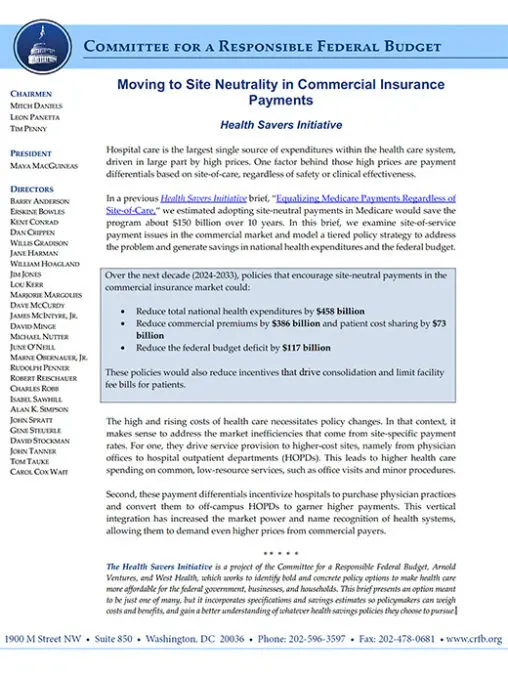Hospital care is the largest single source of expenditures within the health care system, driven in large part by high prices. One factor behind those high prices are payment differentials based on site-of-care, regardless of safety or clinical effectiveness.
In a previous Health Savers Initiative brief, “Equalizing Medicare Payments Regardless of Site-of-Care,“ we estimated adopting site-neutral payments in Medicare would save the program about $150 billion over 10 years. In this brief, we examine site-of-service payment issues in the commercial market and model a tiered policy strategy to address the problem and generate savings in national health expenditures and the federal budget.
The high and rising costs of health care necessitates policy changes. In that context, it makes sense to address the market inefficiencies that come from site-specific payment rates. For one, they drive service provision to higher-cost sites, namely from physician offices to hospital outpatient departments (HOPDs). This leads to higher health care spending on common, low-resource services, such as office visits and minor procedures.
Second, these payment differentials incentivize hospitals to purchase physician practices and convert them to off-campus HOPDs to garner higher payments. This vertical integration has increased the market power and name recognition of health systems, allowing them to demand even higher prices from commercial payers.
The Health Savers Initiative is a project of the Committee for a Responsible Federal Budget, Arnold Ventures, and West Health, which works to identify bold and concrete policy options to make health care more affordable for the federal government, businesses, and households. This brief presents an option meant to be just one of many, but it incorporates specifications and savings estimates so policymakers can weigh costs and benefits, and gain a better understanding of whatever health savings policies they choose to pursue.



